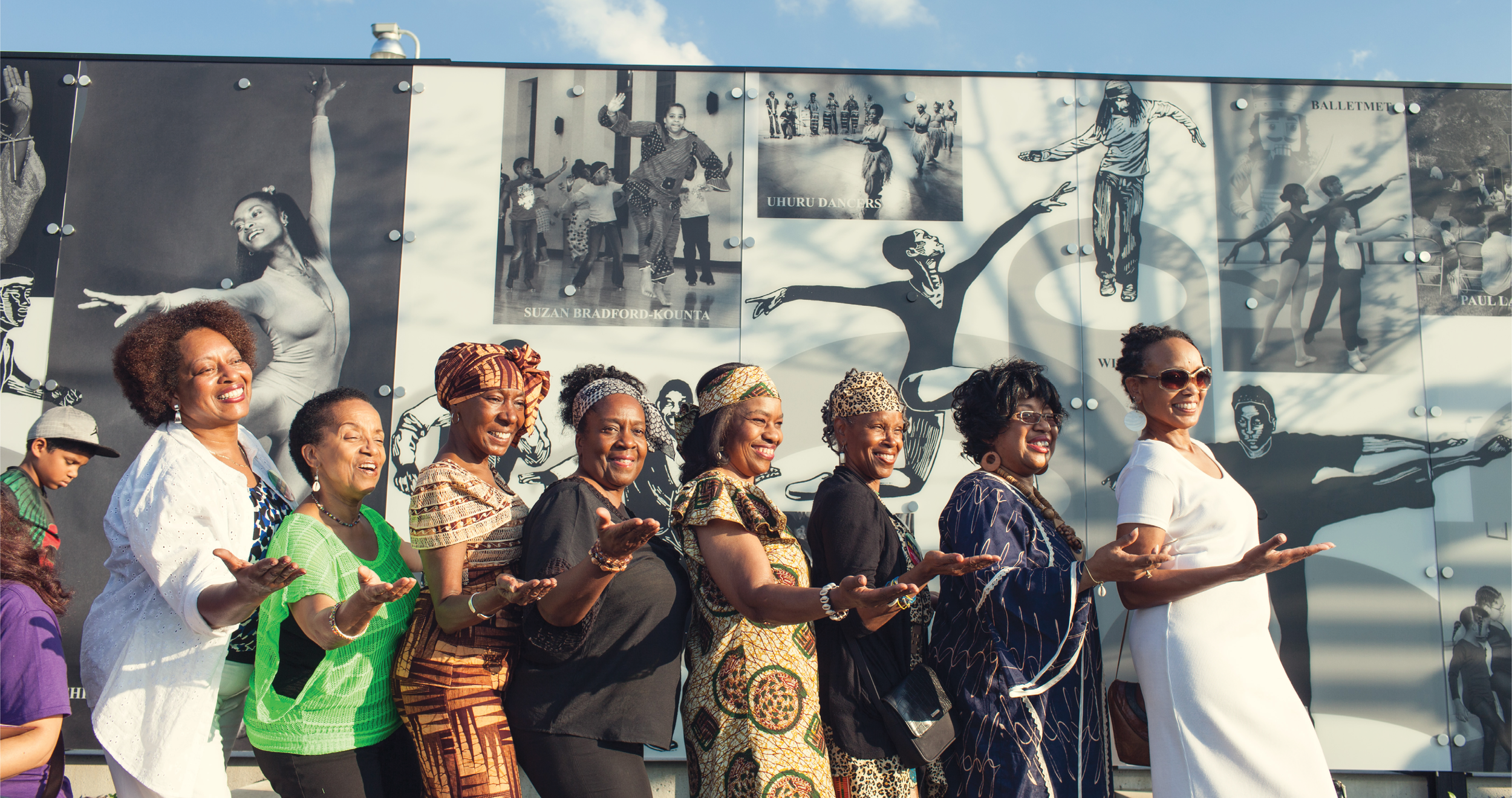
Bringing People and Communities Together by Inspired Transportation Design
A revitalized connection to downtown celebrates a neighborhood's cultural heritage.
In the 1960s, the new Interstate 71 freeway construction made regional connections with regard to neighborhoods, pedestrian movement, or long-term human impacts and instead cut through established communities, separating the historic and culturally significant King-Lincoln District from downtown Columbus and causing a decline in the area. A joint ODOT, City of Columbus, and MORPC planning and design effort led by MKSK, however, seized the reconstruction of this freeway as an opportunity heal this divide with enhanced bridges, improved avenues, a park cap, and public art. The Long Street Bridge Park Cap and Cultural Wall serves as a greatly improved physical connection, neighborhood gateway, and reminder of the cultural impact of the community that helped to spur revitalization and renewed pride in the area.
Former USDOT Secretary Anthony Foxx stated that the “effort to reconnect and revitalize a community divided by past transportation policies is a compelling example of how transportation can create or eliminate opportunity gaps.” The restoration not only reenergized the District by creating opportunity, but also developed better, safer access, incorporated green space within the urban framework, and represented the neighborhood’s rich history through the use of cultural art panels.
The historic neighborhood prioritized and embraced the expression of their heritage through a 240-foot long cultural wall that stands the test of time, a tribute to the people and places that made a difference in the community. This public artwork honors artists like Aminah Robinson and Elijah Pierce, writers like James Thurber, and jazz musicians like Ziggy Coyle and Nancy Wilson. Rather than simply merging the community into the urban landscape, the Long Street Bridge helps define the King-Lincoln District by celebrating African American culture, inspiring its future, and sharing its message with visitors and the community alike. The bridge has transformed into an illuminated beacon and a district identity marker.
From the concept through construction, the planning and design team for the Long Street Bridge, aware of the potential physical impact and social implications, successfully balanced the needs of the community with its cultural expression. The bridge was adapted to become a more welcoming place, with widened structures, complete streets and streetscape, enhanced aesthetics, and added landscape to match the new culturally connected space.
Located at the gateway to the King Lincoln District, the bridge represents a new era, one that aspires to continue bridging history’s gap and knitting African American culture into the urban fabric of the future. “We need to bring people, neighborhoods, communities, and regions together by design,” Foxx declared, “and we must recognize the important role transportation can play in doing so.”











